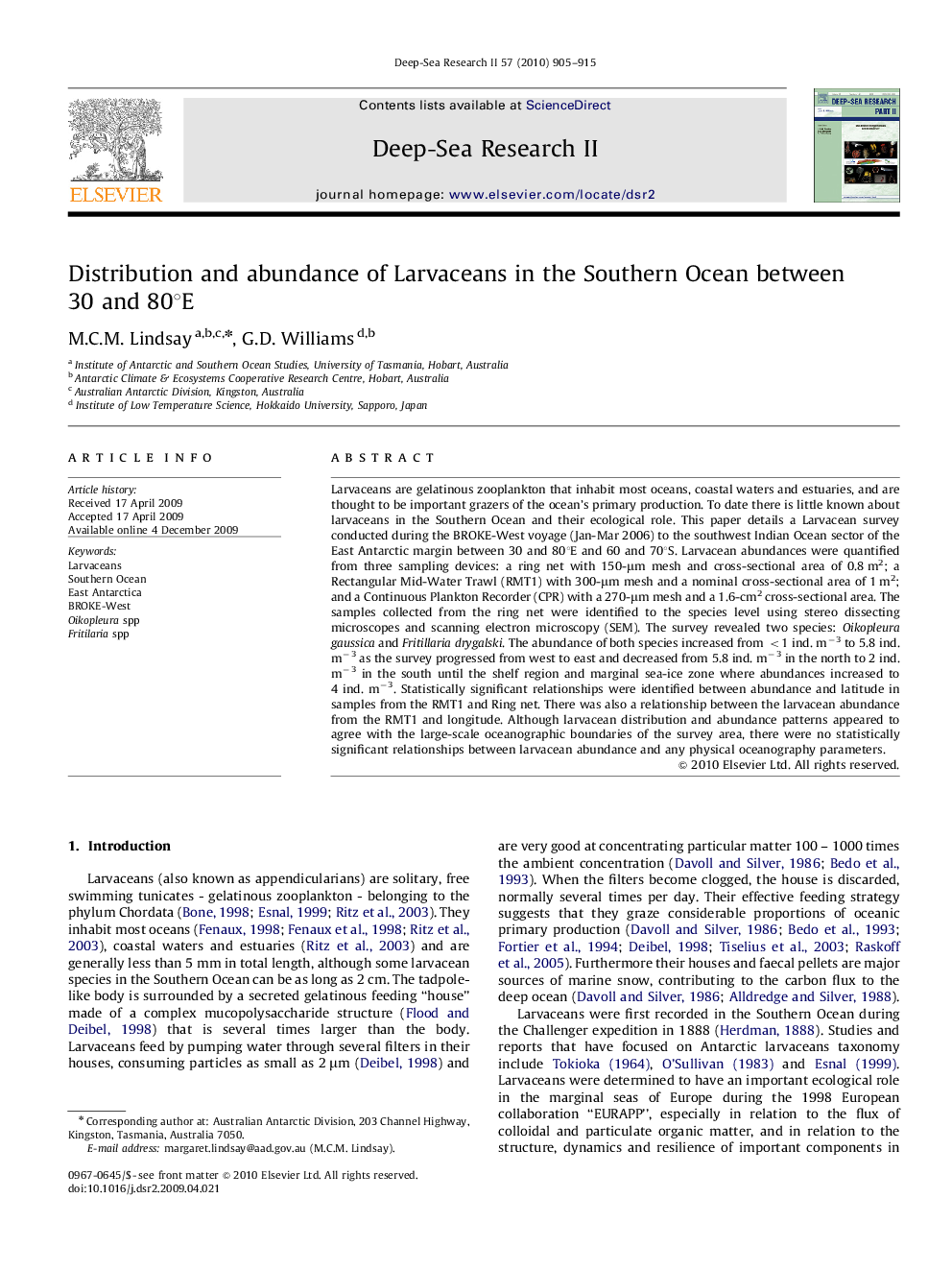| Article ID | Journal | Published Year | Pages | File Type |
|---|---|---|---|---|
| 4537191 | Deep Sea Research Part II: Topical Studies in Oceanography | 2010 | 11 Pages |
Larvaceans are gelatinous zooplankton that inhabit most oceans, coastal waters and estuaries, and are thought to be important grazers of the ocean's primary production. To date there is little known about larvaceans in the Southern Ocean and their ecological role. This paper details a Larvacean survey conducted during the BROKE-West voyage (Jan-Mar 2006) to the southwest Indian Ocean sector of the East Antarctic margin between 30 and 80°E and 60 and 70°S. Larvacean abundances were quantified from three sampling devices: a ring net with 150-μm mesh and cross-sectional area of 0.8 m2; a Rectangular Mid-Water Trawl (RMT1) with 300-μm mesh and a nominal cross-sectional area of 1 m2; and a Continuous Plankton Recorder (CPR) with a 270-μm mesh and a 1.6-cm2 cross-sectional area. The samples collected from the ring net were identified to the species level using stereo dissecting microscopes and scanning electron microscopy (SEM). The survey revealed two species: Oikopleura gaussica and Fritillaria drygalski. The abundance of both species increased from <1 ind. m−3 to 5.8 ind. m−3 as the survey progressed from west to east and decreased from 5.8 ind. m−3 in the north to 2 ind. m−3 in the south until the shelf region and marginal sea-ice zone where abundances increased to 4 ind. m−3. Statistically significant relationships were identified between abundance and latitude in samples from the RMT1 and Ring net. There was also a relationship between the larvacean abundance from the RMT1 and longitude. Although larvacean distribution and abundance patterns appeared to agree with the large-scale oceanographic boundaries of the survey area, there were no statistically significant relationships between larvacean abundance and any physical oceanography parameters.
